|
|
Megaloceros
"Irish Elk"
Pleistocene
Ireland
|
|
|
Stegomastodon
arizonae
Pleistocene
Arizona
|
|
|
Megaloceros, the "Irish Elk" was neither and elk or a moose, but the world's largest deer that ever existed. Most commonly found in the peat bogs of Ireland, it is also found in other parts of Europe and Asia. Stegomastodon, an elephant relative, was more closely related to mastodons than modern elephants.
|
|
| |
|
|
Smilodon
californicus
"Saber toothed
cat"
Pleistocene
California
|
|
|
Eremotherium laurillardi
Giant Ground Sloth
Pleistocene
Panama
|
|
|
| Smilidon, the Saber toothed Cat, is found in fairly large numbers in the Rancho la brea tar pits in southern California. |
|
| |
|
|
Eremotherium laurillardi
Giant Ground Sloth
Pleistocene
Panama
|
|
|
Glyptotherium
arizonae
Pleistocene
|
|
|
|
Ground Sloths like Eremotherium and armadillo relative like the Glyptotherium, originated in South America and moved north into North America during the Pliocene and the Pleistocene.
|
|
| |
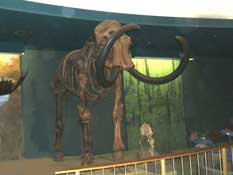 |
Mammuthus primigenius
Wooly Mammoth
Pleistocene
|
|
|
Brontotherium
hatcheri
Oligocene
|
| |
| The Wooly Mammoth ranged over Europe, Asia and North America. The last ones became extinct about 4000 years ago in Northern Siberia. Brontotherium was a large browsing animal similar to a rhino that had a Y shaped bone protuberance on its nose. Many brontotherium fossils have been found in the Dakotas and Nebraska. |
|
| |
 |
Uintatherium
robustum
Eocene
|
|
 |
Paramylodon
harlani
Harlan's Ground
Sloth
Pleistocene
California
|
| |
|
|
|
|
| Uintatherium was a large rhino-sized browsing animal that had a bizarre looking skull with 8 bony horn like protuberances and also large canines. Paramylodon was a smaller ground sloth found in the famous La Brea tar pits in California. |
|
| |
 |
Moropus
elatus
Miocene
|
|
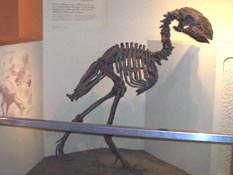 |
Diatryma
steini
Eocene
Wyoming
|
| |
| Moropus, a chalcothere related to horses and rhinos, had large claws on its feet instead of hooves. It was able to rear up on it's hind legs to browse leaves in trees. Diatryma was a large flightless bird from the Eocene of North America. It was not certain whether it was carniverous or a plant eater. |
|
| |
|
|
|
|
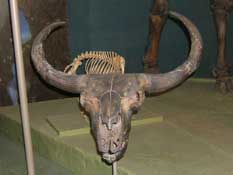 |
Bison crassicornis
Pleistocene
Alaska
|
|
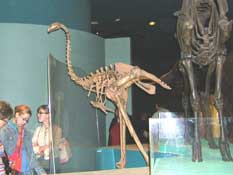 |
Moa |
| |
| |
| |
 |
Teleocerus
fossinger
late Miocene
Kansas
|
|
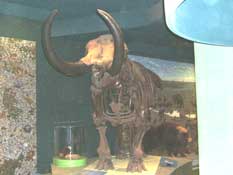 |
Mastodon |
| |
| |
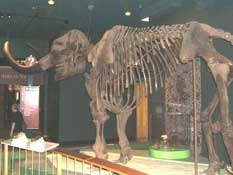 |
Mastodon |
|
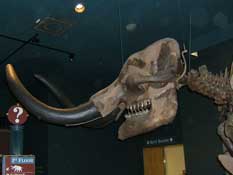 |
Mastodon |

